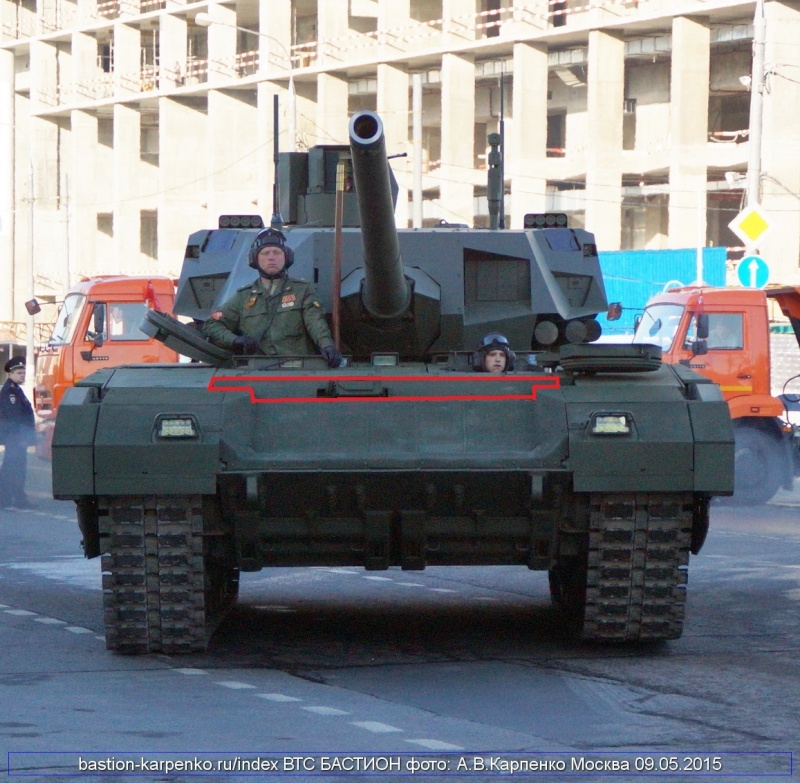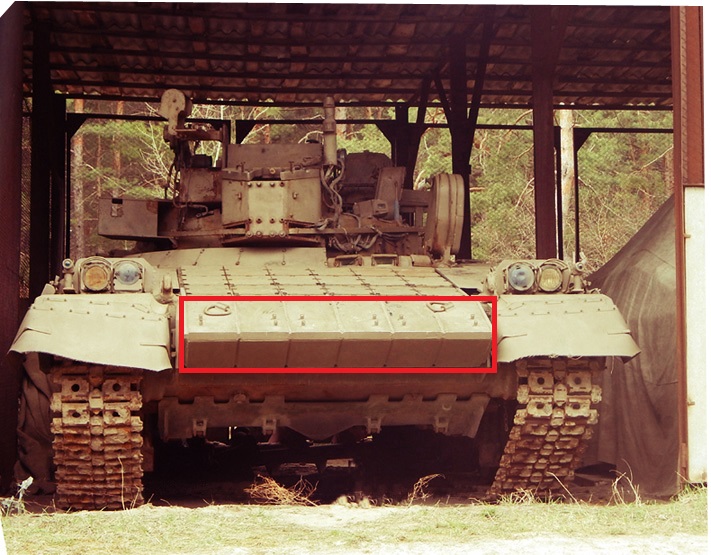-
Posts
323 -
Joined
-
Last visited
Content Type
Profiles
Forums
Blogs
Gallery
Downloads
Events
Posts posted by Mike E
-
-
300 tonnes? Ship it to Russia!

-
Saw Man from UNCLE a few days ago...worst Russian accent I have ever heard....worse than Captain Ramius.
-
No joke.
Still, I'm hopeful that some more information will be released.
-
Mail.ru Armored Warfare adv.
According to the AW forums, UVG will be contributing to the game. This is going to be really interesting, and may shed some light on a few of Armata's hidden features.
-
That article was probably a copy/paste job from Sputnik. GG Janes
I think it was a mis-translation in regards to "invisible".
-
Loooser I have a few questions for you (sorry in advance :/);
- Do you have any sources on the Vacuum series of APFSDS? I used to know two, both of which seemingly have been deleted.
and...
- What is the thin sheet above the glacis for? I have a quick (ah, my excuses) picture;

I suspect it is related to the internal armor layout, but would love to hear your thoughts. Thanks

-
Ah, perfect example... I bounced off of a Leopard 1's side, angled at ~60 degrees, with APFSDS from a T-72A.

250 mm at 2 kilometers seems like a good bit, to be honest.
-
Well, it isn't a simulator (here comes the WoT excuses all over again).
I will agree with the APFSDS v. sloped armor issue, it isn't really...polished for lack of a better word.
-
"Not as stealth optimized" is another way of saying "not compromised for stealth".
AFAIK, the Izd. 30 engines will complete rig-testing this coming year.
-
We all know Arjun is the real #1 (heads to Indian defense forum).
This is when my signature is kind of ironic...
-
The worst part of that video...is that people are actually liking.
Oh humanity, how you have fallen.

-
Haha, that's true.

Here's to repairing all 6!
-
Hopefully they at least renovate Prototype #6, which would be the rightmost vehicle.
-
Excellent posts.

The 'Nota' would have still been a Kharkov design, correct?
And..."more than 1 meter frontal armor, 5 layers armor package on sides" sounds like Armata.
-
No confirmation just yet... Su-35 is a great platform though, so such a purchase is very welcomed.
-
Can anyone tell me whether the Russians ever seriously looked at an autoloader with the ammunition in the bustle for the 125mm gun. I realise the two piece ammunition might be a problem, but was any serious consideration given and, if so, why was it not proceeded with?
Even in just export market terms, it would overcome the criticism that the internal ammunition stowage on the T-72 and derivatives (and T-64 and derivatives) was an additional vulnerability. Which leads to comment on whether your ammunition stowage matters a damn if you are penetrated by a modern FSDS or HEAT round?
Is this the area to discuss this whole ammunition stowage as part of the layered protection concept issue?
Cheers
B
They did, and more than once... Object-640 used a bustle-loader in combination with a 2A46M, though the project went to bust with the bankrupting of Omsktransmash.
Burlak turret, intended for the T-72, also used a bustle loader. The reason for not actually buying them, I don't know...but as a whole it would have been very expensive, and while it used a bustle loader, it also retained the carousel in the hull.
The "additional vulnerability" came more from exposed rounds, rather than the idea of hull-storage itself. T-64/80 used a vertical propellant carousel, that left that propellant exposed. Because it was vertical AND exposed, a decent number of penetrations would lead to a cook off. T-72's use a horizontal carousel, that isn't exposed...however, rounds *can* be stored along the inside of the crew compartment, where they are exposed. That is where the problem came from, *exposing* propellant.
T-90MS fixes this problem by adding more armor to the carousel, and also by putting excess ammunition in the bustle instead of the crew compartment.
Bustle-loaders are very safe for the crew, but they also provide little, if no protection for the rounds. This is one area where hull storage actually makes sense.
-
The prototype looks *really* similar to what the Swiss were building at the time.
-
It was still immensely thick behind that "weak spot". Some 600 mm in LOS, IIRC.
Arjun is.......
-
God, the comments are stupid
It's FTA, the people there read Gawker...
-
Delta-Canards aren't exactly known for having little induced drag, IIRC.
LPIR is great in theory, but their performance isn't going to be perfect. There have also been developments to try and defeat them. http://dtic.mil/dtic/tr/fulltext/u2/a456960.pdf
-

That is what I'm referring to. Either it is insanely thick, or that is just two K-5 like plates angled together like on the T-72B3 turret.
-
Look at tip of frontal armor on the second photo of the Molot, i think ERA was Kontakt-5 or similar.
The other picture shows its' true thickness, which must be at least x2 that of K-5.
-
For sustained turn performance is definitely is. During a sharp turn, induced drag will be a dominant source of total drag, and inversely proportional to wing aspect ratio per the equation:

The only thing you've got to careful of is the fact that in most modern fighters, by design, the wing and fuselage blend together, so there's usually a blend area that is acting as a wing. Usually, it is acting as an extremely low aspect ratio wing (deliberately), so something like the F/A-18 bleeds energy faster in a turn than you'd think it would just looking at the wings, because the LERX create big vortices (this is deliberate and has benefits).
The APG-81 has all sorts of clever trickery that is supposed to make it difficult to pick up with RWR. Even if it's up against very clever electronics it does get picked up, which is far from a given, getting picked up on RWR does not instantly eliminate the stealth advantage. All the other plane knows is that something pinged them, and a rough bearing towards that thing. They don't know who it was that pinged them, how far away it was or what direction and speed it's going; all things they would need to know to sling a BVR missile at it.
It's very similar to the issue with IRST before; for BVR missile engagements, there really is no substitute for an actual radar lock.
Not by itself, hence my point. It can be used to give one a general idea of the *wings'* performance, but the fuselage itself is also crucial...as are the control surfaces, TVC etc.
F/A-18 is a well known energy bleeder.
Currently, only the Rafale's radar system is known to be "hard to pickup". I forget how they do it, but it has something to do with a scattered frequency or something.
Given enough time, said variables could probably be figured out.
-
There was an air going model up to 04' IIRC. It is possible that she could be brought back, but that's the optimistic view.


GLORIOUS T-14 ARMATA PICTURES.
in Mechanized Warfare
Posted
That's basically confirmed, but why go to such a great length over just the tank model? It makes sense that a few features and specifications are transferred.
According to the UVG/AW collab site Tankopedia, the T-90A with Relikt is invulnerable to M829A3 at a range of 1.2 km. Not related to Armata, but still interesting.